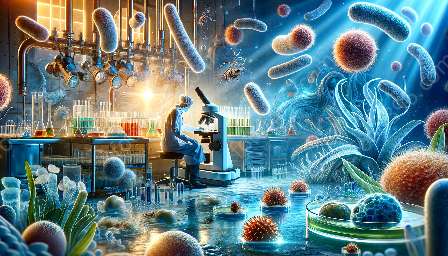Norovirus, a highly contagious virus, affects various aspects of seafood microbiology, foodborne pathogens, and seafood science. This comprehensive guide explores the transmission, symptoms, prevention, and treatment of norovirus, providing valuable insights for professionals and enthusiasts alike.
What is Norovirus?
Norovirus is a prevalent cause of foodborne illness worldwide and a significant contributor to the burden of gastroenteritis. It is highly contagious and can result in outbreaks in various settings, including those related to seafood consumption.
Norovirus and Seafood Microbiology
Seafood microbiology encompasses the study of microorganisms in seafood and their impact on food safety. Norovirus is a key concern in this field, as it can contaminate various types of seafood, posing a significant risk to consumers.
Impact on Foodborne Pathogens
As a leading cause of foodborne illness, norovirus affects the landscape of foodborne pathogens. It is imperative to understand the mechanisms of norovirus transmission and its implications for food safety to effectively mitigate its impact on public health.
Norovirus and Seafood Science
Seafood science involves the comprehensive study of seafood, including its production, processing, safety, and quality. Norovirus presents a unique challenge in this field, as it necessitates rigorous protocols and interventions to safeguard seafood products and prevent contamination.
Transmission of Norovirus
Norovirus is primarily transmitted through the consumption of contaminated food or water, direct contact with infected individuals, and contact with contaminated surfaces or objects. In the context of seafood, cross-contamination during harvesting, processing, or preparation can lead to norovirus contamination.
Symptoms of Norovirus Infection
Individuals infected with norovirus may experience symptoms such as nausea, vomiting, diarrhea, abdominal cramps, fever, and malaise. The onset of symptoms is rapid, typically occurring within 12-48 hours after exposure to the virus.
Prevention of Norovirus Contamination
Preventing norovirus contamination in seafood involves implementing stringent hygiene practices, monitoring and controlling the quality of water sources, and adhering to proper seafood handling and preparation techniques. These measures are essential for minimizing the risk of norovirus outbreaks associated with seafood consumption.
Treatment and Management
There is currently no specific antiviral treatment for norovirus infection. Patients are advised to maintain proper hydration and rest. It is essential to manage outbreaks effectively to prevent further spread of the virus.
Conclusion
Understanding norovirus and its implications in seafood microbiology, foodborne pathogens, and seafood science is crucial for ensuring the safety and quality of seafood products. By comprehensively addressing norovirus-related challenges, the industry can minimize the risk to consumers and uphold high standards of food safety and public health.

